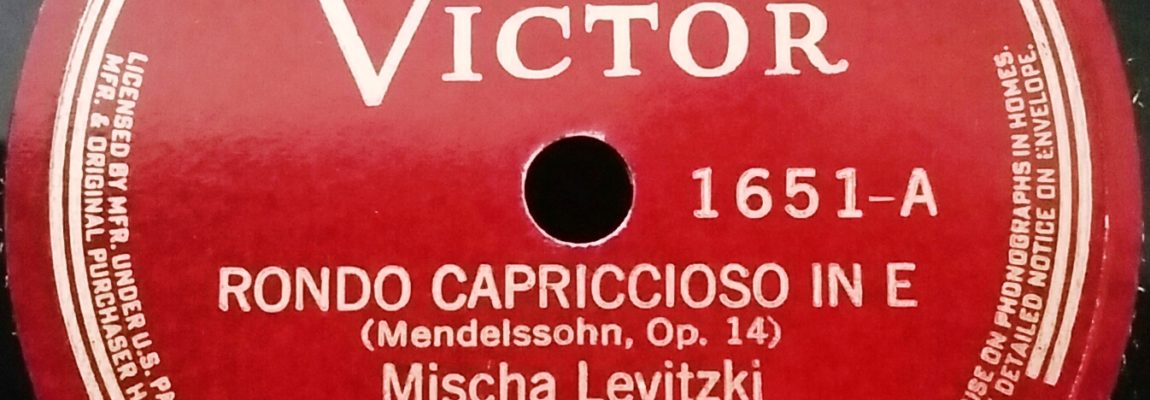I’ve recently been uploading some fantastic transfers of 78rpm discs made by Tom Jardine, who has generously allowed me to put them on my YouTube channel. In a couple of cases, joining one side of these records to the other to produce a seamless edit of a longer piece of music can be challenging. In the video below, I explain why these ‘side joins’ are necessary and demonstrate how I accomplish this using computer software:
Here is the complete Mischa Levitzki performance of the Mendelssohn Rondo Capriccioso, with the edit made as seen in the video:
A couple of other examples of some side joins I effected: a very challenging one in this Mark Hamboug recording uploaded by a colleague. Hambourg slowed down significantly at the end of Side A of the Gounod-Liszt Faust Waltz but then continued at the normal speed right at the beginning of Side B. The side join takes place at 3:18.
The join between the second and third sides of Marcel Maas’s glorious 1931 recording of Bach’s Toccata and Fugue in C minor BWV 911 was very difficult to implement. Fortunately, I managed to make a smooth edit thanks to the computer software and musically-trained ears: you can notice it 8:06 as the video shows the shift between sides 2 and 3, though audibly it’s virtually imperceptible.
These are just a few examples of some of the edits that I’ve made. I have some cassettes of 78 transfers that I did when in university, where I did the side joins only by timing very carefully with the cassette deck that I was using to record them, and they worked incredibly well. I’m planning to borrow some equipment to transfer and upload these, as the sound of the transfers (with an incredible stylus at the university library) was really amazing.
In the meantime, I hope you’ve enjoyed seeing some of the work that goes into making recordings from the 78rpm era listenable in long-play formats – and I hope you enjoy these performances as well!
